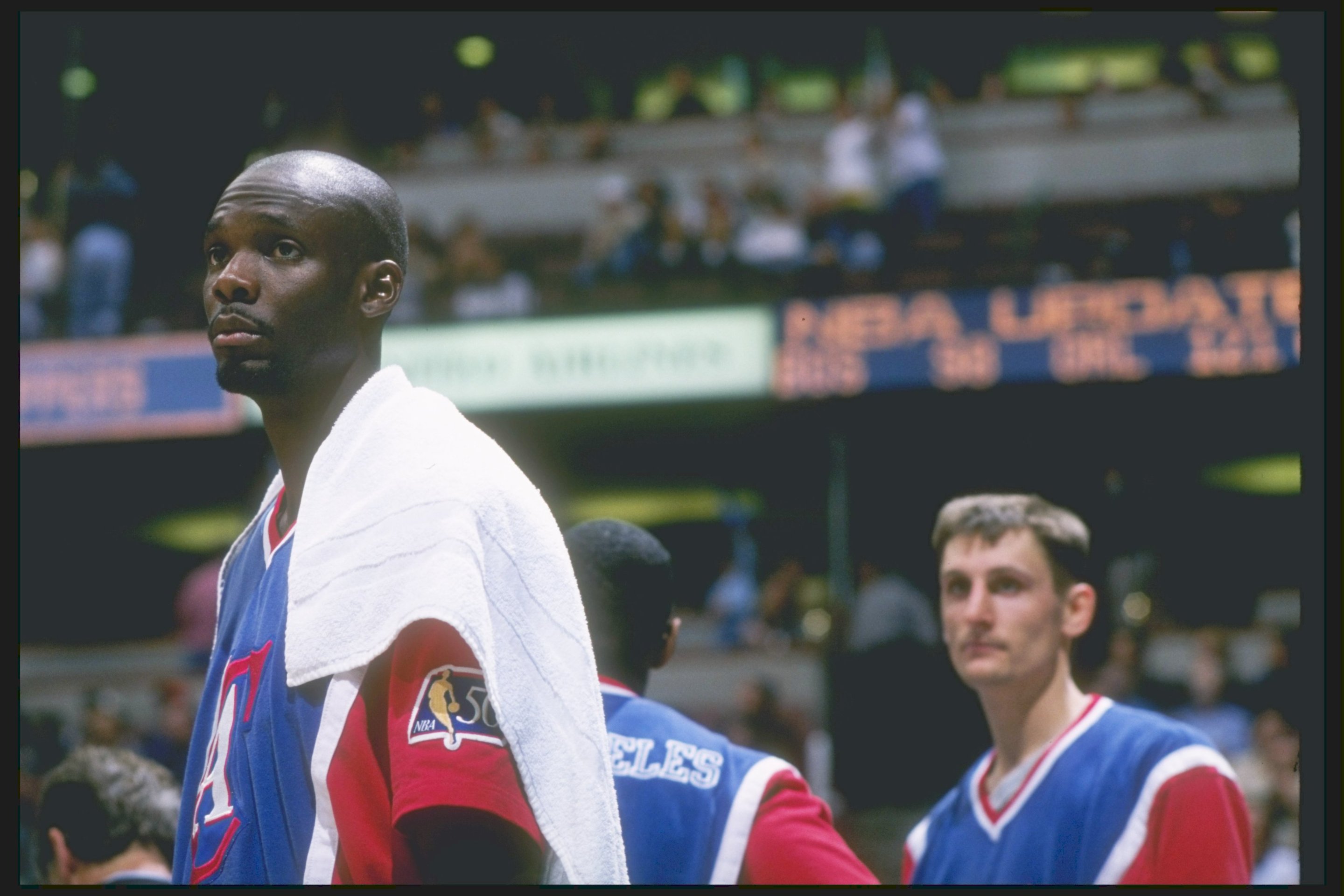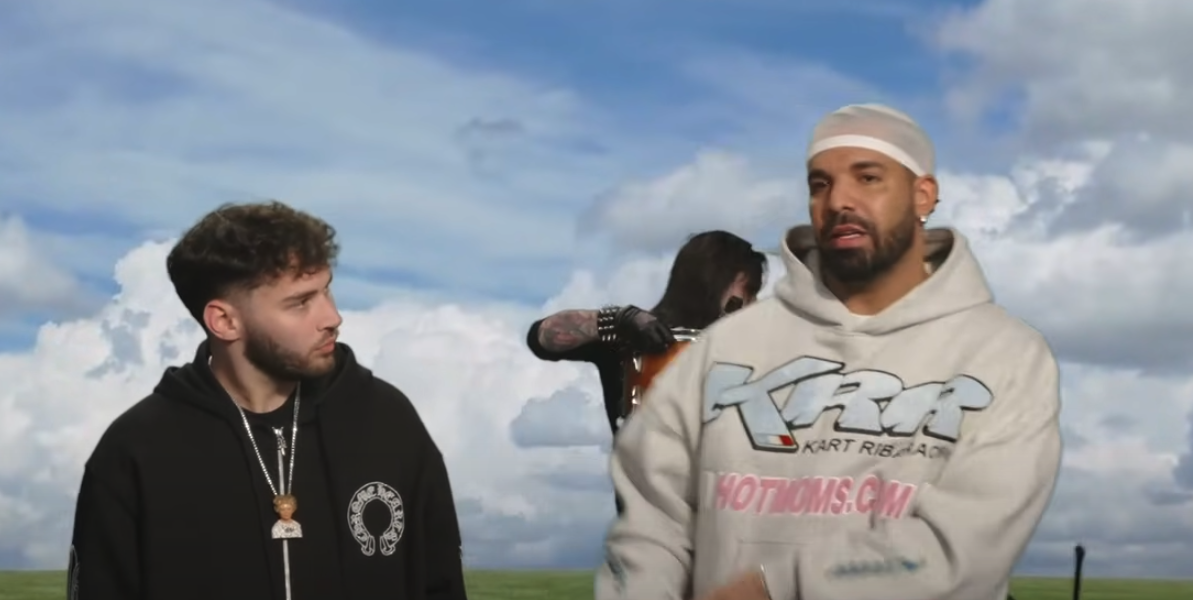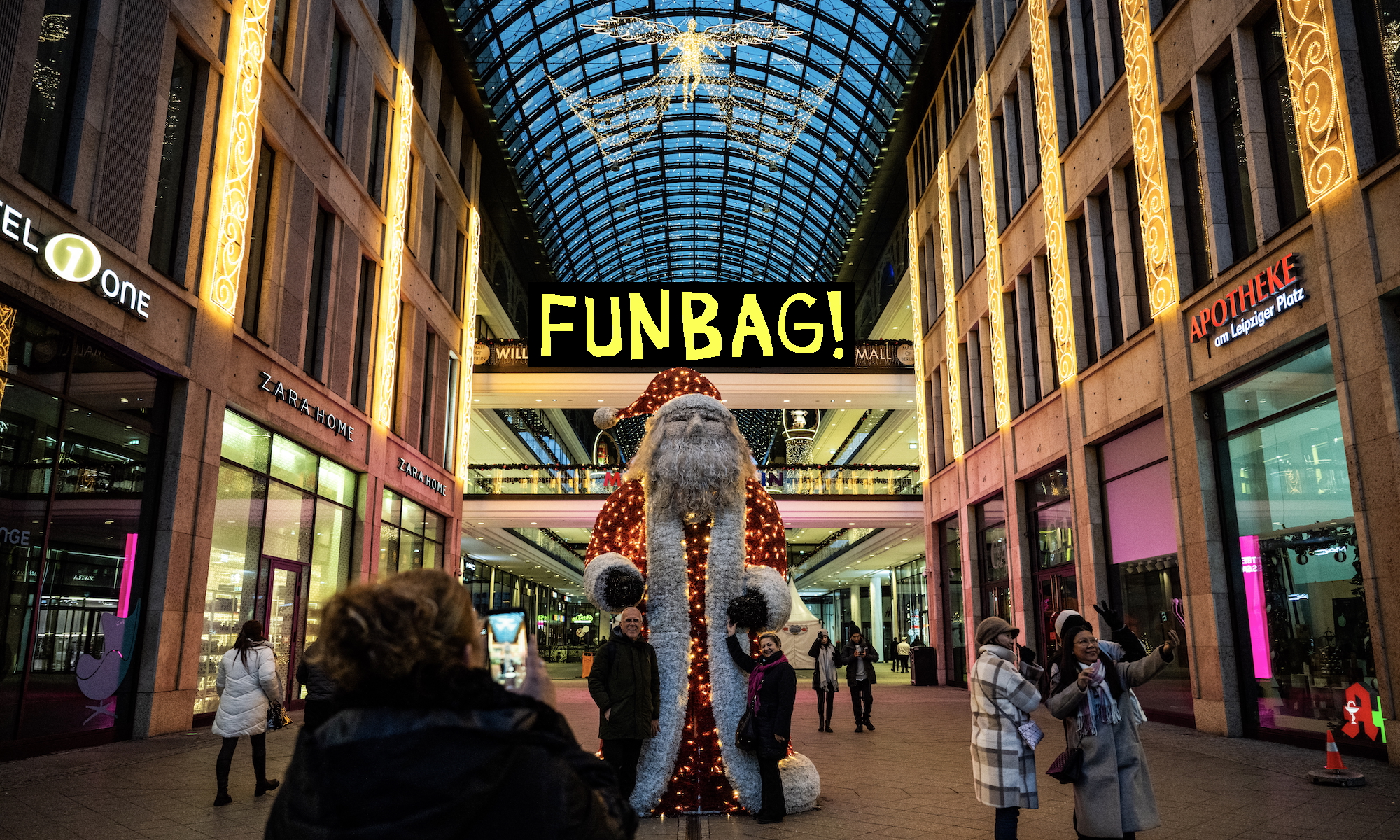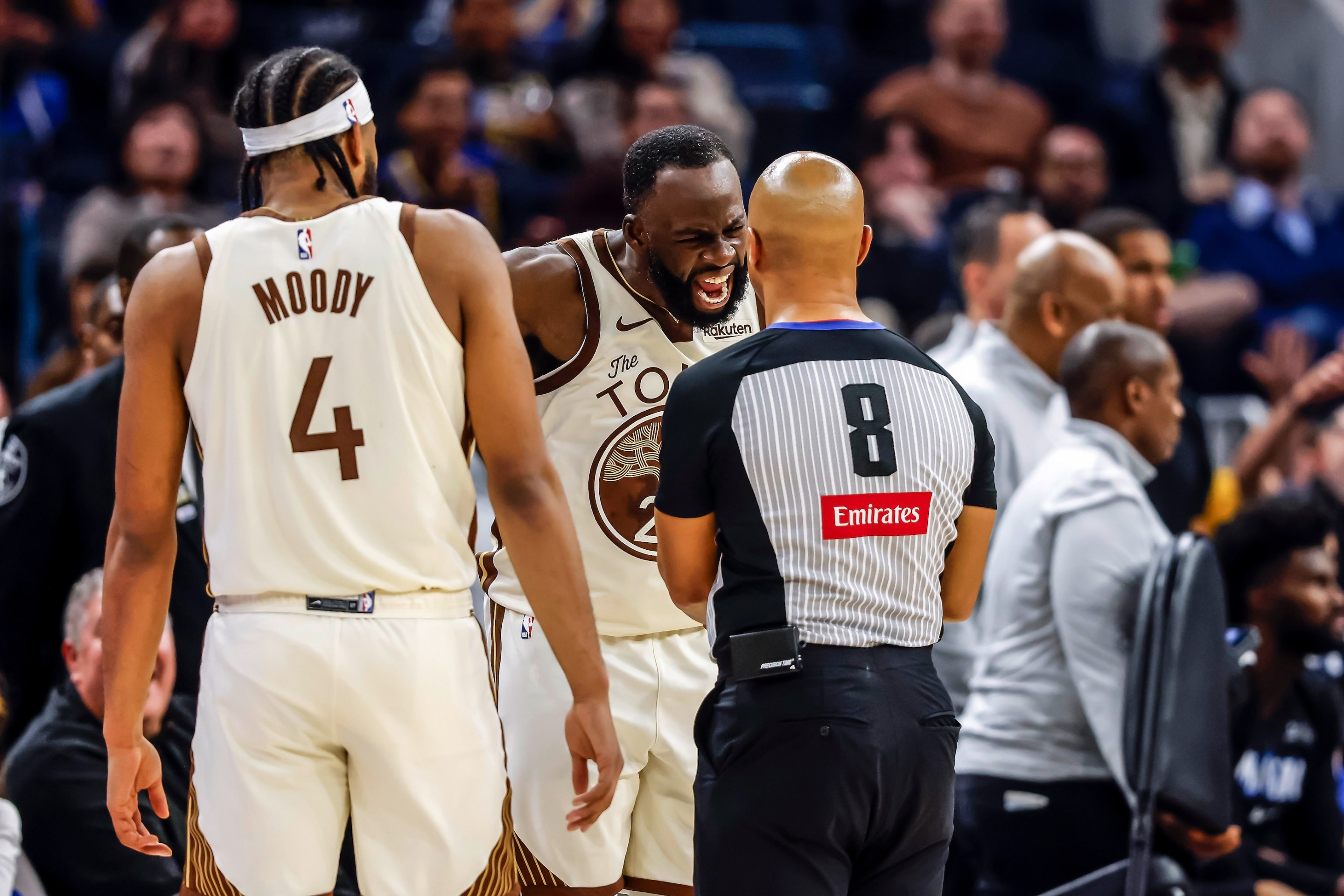The primary selling point of the Los Angeles Clippers' new arena, which broke ground last month, was that a basketball team simply needs its own home court, and that the Clippers have always borrowed someone else’s. It’s a fair gripe. At Staples Center, where they’ve played since 1999, Clippers fans file past bronze statues of their biggest rival on the way into the building; inside, at their own games, fans can buy that rival’s merchandise. The Clippers get the third pick of calendar dates, which means they frequently host Sunday afternoon games after the Lakers and the NHL’s Kings have filled the building the two nights before.
Eventually Clippers owner Steve Ballmer, who is the richest person in the United States to employ a mascot, threw money at this problem—$1.8 billion for the new arena, $400 million for the Inglewood Forum, whose owners were suing to protect their territory, and $100 million for a community benefits plan, which came with assurances that a local nonprofit coalition would get out of the way.
Finding a home for the Clippers didn’t need to be so expensive or odious. There’s an alternate history in which the Clippers moved in not at Staples Center, but elsewhere, a few years earlier, as the top-billed tenant at a cutting-edge new arena, in a city starving for NBA action and with a fan base already excited about all of the above. The story of how and why that never came to pass is told here in full for the first time.
Here’s how close Donald Sterling was to moving the Clippers to Anaheim and ditching his team before the NBA ditched him: Commissioner David Stern called to congratulate the executives of the Clippers’ new home arena on the deal. “He said, ‘I understand that you had a great discussion last night and that Donald signed the agreements,’” recalled Brad Mayne, the general manager of the Arrowhead Pond at the time. “I told him no, and he was pretty surprised.”
The year was 1996. The NBA was beginning to reap the dividends of global expansion, and the Orange County city of Anaheim, desperately wanting a taste, had helped finance the sparkling $130 million arena to manifest that outcome. A third pro team would put Anaheim on par with Los Angeles in terms of pro sports franchises, only with swankier facilities and the frisson of new investment.
It was no secret the Clippers were ripe for the picking. Jay Leno’s favorite punchline played in the crumbling Los Angeles Memorial Sports Arena, est. 1959, and didn’t draw. Some of this was because they were reliably one of the worst-run franchises in the league, but also no one wanted them there to begin with. When Sterling relocated the franchise from San Diego in 1984, he didn’t even have the league’s permission. (He wound up paying Stern a few million dollars to let him stay.) And then, of course, the team sharing a market with the most popular basketball team in the world trotted out full lineups of guys now completely lost to time—your Harolds Ellis, your Erics Piatkowski, your Terries Dehere. They dropped 55 games a season and routinely duffed high lottery picks. Loy Vaught was, for a time, something like a franchise player. A change of scenery might have helped, which is to say it would not have been possible for it to hurt.
Orange County had more than just an arena. It had energy. Indeed, the Clippers had seemed both pulled toward Anaheim by forces beyond basketball and pushed by the social calamities then busily eating away at L.A.’s urban fabric. A trial and an earthquake had forced the franchise to test the waters at the Pond; seeing how much more hospitable things were in Anaheim, the Clippers originally settled on hosting a few games a year there. The team played better in those games, buoyed by sellout crowds that wanted them to stay.
Even a notoriously stingy owner could see how much money was there for the taking. There was wealth in the O.C., the county that launched Richard Nixon and Ronald Reagan, and the Pond was primed to extract some of it. Sterling was well aware that the Clippers could opt out of their Sports Arena lease after any season. For the first five months of 1996, it really seemed like they would.
A quarter-century later, most of the people involved not named Donald Sterling were happy to share their (sometimes admittedly hazy) memory of why the team ultimately didn’t. A few were surprised the story hadn’t been told sooner. Tim Ryan, who as CEO of the Anaheim Ducks still works at the Pond (it’s now called Honda Center), told me his version during his commute there. “It's mind-boggling to me,” he said. “You're the first person to ever pick up the phone.”
I will reluctantly admit that it’s possible no one really cared enough back then to find out the full story; the question of why they would want to hear it now gave me some pause. I suppose what drew me to it is the allure of that alternate history—the death and life of an NBA franchise in Anaheim, maybe charmed, maybe cursed. That story, whatever it might have been, is one that at the very least does not end in Inglewood, and by repeating the same mistake that incited such contempt in the first place: setting up where nobody wants them.
It’s also just a good story. When Mayne picked up Stern’s phone call that day in 1996, the deal was off. But Stern wasn’t wrong. Sterling did, in fact, sign the documents agreeing to move the team. They just never made it to Mayne’s office.
Before Anaheim had the Arrowhead Pond, it had Clippers basketball. This was a tertiary consequence of, and here I must acknowledge that this origin story is absolutely as bleak as they come, the acquittal of four LAPD officers who assaulted Rodney King on camera. That April 29, 1992, verdict set off rioting across Los Angeles. Thousands of National Guard troops poured into the city to quell the violence, and the Sports Arena, located just south of Downtown, became their staging area. That meant displacing the arena’s only tenant during its first playoff appearance since moving to Los Angeles.
The Clippers postponed their win-or-go-home Game 4 against the Utah Jazz as the city burned. Then they moved it 40 miles south, to the Anaheim Convention Center. There, before 7,400 delirious, towel-waving fans in the main hall and another thousand or so in an adjacent meeting room, the Clippers delivered a stunning victory to even the series.
If the riots indirectly offered a glimpse of the Clippers’ future in Anaheim, another local catastrophe produced a full preview. On January 17, 1994, a magnitude-6.7 earthquake struck near Northridge, caving in homes, collapsing freeways, killing dozens and injuring thousands across Los Angeles. It also closed the Sports Arena temporarily. "We literally were afraid tiles were gonna fall," recalled Mitch Huberman, then a Clippers marketing VP. With the Knicks coming to town on Jan. 26, the newly opened Arrowhead Pond, where the Clippers had already hosted a preseason game, became the backup plan.
The Pond was everything the Sports Arena wasn't. It was spacious and well-appointed, with luxury suites and marble floors and, crucially, also didn’t need netting installed on the ceiling so the tiles wouldn’t fall. It was run by the Ogden Corporation, a Fortune 500 company that specialized in facility management and which had built it on spec—with the aid of the Anaheim taxpayers, to be clear—in hopes of luring an NBA team. On the other hand, the production value of games at the Sports Arena was negligible. Huberman recalled the Clippers wanting to do lights-out lineup introductions, which were just becoming popular around the league. "When we turned our lights out," he recalled, "it took 20 minutes for them to come back on."
After the Clippers announced the new location for the Knicks game, the Pond sold out in less than 48 hours. But the new arena still had to honor Sports Arena ticketholders who made the drive. The result was the biggest crowd in arena history, and chaos in the aisles. Tim Ryan, then an Ogden VP, and Clippers president Andy Roeser spent most of the game pulling fans sitting on stairs into suites. “It was like Whac-A-Mole,” Ryan said.
No matter how squeezed they were, the fans in the building that night got their money's worth. With nine-tenths of a second left in a tie game, Patrick Ewing hit a fadeaway jumper over Elmore Spencer to give the Knicks the victory. "The feeling in that arena was absolutely electric,” Ryan said. "Everyone that was there, whether you were a fan, or the Clippers or arena management, we all in our minds knew right away that—oh my—there is a massive appetite for the NBA in Orange County." Not long after, Roeser signed a three-year deal committing the Clippers to play six regular-season games a season at the Pond.
Even by their own standards, the Clippers were trash during those years; they started the 1994-95 season 6-34. But they stank less vigorously in the Pond games, going 6-8 there in the first two seasons. They also kept selling out the building, putting to rest any doubts that they sold out the first game because it was against the Knicks. Look at this one: 17,578 to see Vaught and company get trounced by the Mavs and fall to 3-19. A few weeks later, even more turned out to see the Clippers lose to the Kings. Their average attendance at the Pond that first year was 17,782. At the Sports Arena it was 9,332. When I asked Roeser why they settled on six or eight home games and not 10 or 20, he said the right number was probably 41.
Ogden managed dozens of venues around the world, including Wrigley Field, Seattle’s Kingdome, the Los Angeles Convention Center, and the World Trade Center Observation Deck. The Pond was the only facility the New York-based conglomerate had paid to build, and Mayne told me it was Ogden's most profitable operation. But Ogden's ambitions were greater than filling calendar dates at its crown jewel. It wanted to run a team, too.
I learned about all of this because I fell down a rabbit hole while trawling for old Clippers stuff on eBay. It’s a coping mechanism I developed after investing decades of my life anticipating the team’s next spectacular failure. These dives occasionally turn up odd artifacts, like an invitation to an “all-white” Clippers party that Sterling threw in Malibu back in 1992, or in this case, an ad for something called the Orange County Register Classic, a preseason tilt between the Clippers and Warriors on Oct. 16, 1993, at the Arrowhead Pond. A few days later, it came in the mail—a game program with a bold proclamation on the back cover: Orange County Just Landed Another Professional Sports Team. It was an ad, but not for the game—it was for the building. Just past the table of contents was a greeting from Brad Mayne; I looked him up, found that he is now CEO of the International Association of Venue Managers, and called him.
The first thing Mayne told me was that the Pond was initially designed for basketball—built, basically, for the Clippers. The second thing he told me was that the relocation plan the two parties discussed had Sterling giving up control of the team. Under the terms of the proposed move, Ogden would rent the team for 10 or 12 years and act as its governor; Sterling would still own the franchise, but Ogden would take over its management. This would mean appointing a team president, having ultimate authority on draft picks and other roster decisions, and signing the checks.
It seemed to be a winning proposition for everyone involved. Ogden would finally have the NBA team it built the arena for; judging by the enthusiasm for the games up to that point, the company was confident it would turn a profit on gate receipts alone. Former NBA Deputy Commissioner Russ Granik told me that the proposal had the league’s approval, although he remembered it being a partial sale rather than a 10-year lease, which was Mayne's recollection.
The appeal of all this was obvious on Sterling’s end. He would be getting paid so someone else could improve the net worth of his asset, but he was also always going to be the toughest sell. Sterling had paid millions to the league just to get the team to Los Angeles, and saw it as a tentpole for his real estate business. There was status in owning an NBA team in Los Angeles, even if the team was playing Pooh Richardson 35 minutes a night. The Clippers owner liked to have the women whose company he paid for sitting with him courtside, and he got to rub shoulders with celebrities like Billy Crystal and Roseanne Barr. They were the ones getting invitations to his all-white parties in Malibu; the Clippers were why they showed up.
“We had to keep reminding ourselves,” Huberman said. “No matter what happened, how enthusiastic, stats, revenues, all the things that go into this and add up, at the end of the day, one guy had to say yes.”
But Sterling was not stringing his employees along. At least they don’t think he was, and the discussions would not have lasted as long or gotten as far as they did without his approval. So when the Clippers and Ogden got close to a deal, Ogden executives flew in from New York to put pen to paper. Over dinner at the Peninsula Hotel in Beverly Hills, the Ogden team, along with Sterling, Roeser, and Robert Platt, the Clippers' general counsel, hashed out the final details into the wee hours. “We were down to talking about seating manifests,” Ryan told me.
Around two in the morning, on the brink of signing, Sterling walked away. “He looked at me,” Platt recalled, “and he said to me, ‘Bob, would you drive to Orange County to watch the Clippers?’ And I kind of hemmed and hawed, and he said, ‘Well, I wouldn’t! We're not selling them the team.’”
Nevertheless, Clippers management kept at it, and at some point after that night at the Peninsula Hotel, Sterling gave in. In June of 1996, following a season that saw the Clippers go 19-53 but 4-2 at the Pond, he signed the contract. Sterling signed it, and Roeser signed it, in Anaheim, at the Pond. Except: At Sterling's request, Roeser took the papers home so they could all sleep on it. The plan was for Roeser to bring them back to the Pond the following morning, a short drive from his house in Long Beach. Someone told the league office that the deal was in motion.
An alternate history of sports in Southern California was beginning to materialize. Anaheim was on the verge of sports supremacy with pro hockey, baseball, and basketball all within a half-mile radius; they would have had a three-year head start on Downtown L.A., where Staples Center would not open until 1999. For the Clippers, Anaheim would mean its own territory, its own fan base, and a destiny beyond being a store-brand version of the Lakers in perpetuity. A gorgeous new arena would only have helped with all that.
Perhaps most importantly, the Clippers would have been effectively free of an owner whose singularly poisonous presence seemed to spoil everything the team did. That June, a promising 17-year-old from Philadelphia worked out in front of a dozen team officials in advance of the draft. The Clippers passed on Kobe Bryant in the draft despite his incredible showing that day, though, either because of concerns either about Sterling or about the optics of drafting a teenager, depending on who’s telling the story. Who knows how that story plays out with a different man in charge? They took Lorenzen Wright instead.
“We would have had a great rivalry,” Ryan said. “And now that I look at how Orange County has grown up, and the amount of discretionary income that is in this region, I think it would have grown even beyond what it was back then. I don’t think for a second that if the Clippers would have moved to O.C. that it wouldn’t have been good. It would have been great. They would have sold out night after night.”
All these promises were in the signed papers that sat in the passenger seat the morning of June 6, 1996, as Roeser got on the freeway headed to Anaheim. It wasn't a long trip, and Roeser was looking forward to clear sailing. He had a cell phone, but it was 1996, and in 1996 your boss didn’t necessarily have your number. Roeser also had no real reason to believe that Sterling, whom he knew to be a night owl, would even be awake. All Roeser had to do was make it to the Pond and the Clippers would have made their move.
And then, somewhere in Orange County, his phone rang. It was Sterling; he had Roeser’s number after all and had changed his mind. He was out, and that was that. Roeser turned the car around and went home, defeated. The deal was dead.
The Los Angeles Times reported the next day that a 12-year, $95 million deal to move the team had collapsed. An Anaheim city councilman quoted in the story said he had met with Ogden officials that morning and all had appeared to be going well. He couldn't understand what went wrong. Only a few people knew.
“We were 10 miles away from getting an NBA team in Anaheim,” Ryan said. “Because that's how close Andy was.”
The Clippers played a total of 34 regular-season games in Anaheim from 1994 to 1999, going 14-20, before moving permanently to Staples Center. They have been rootless ever since, even as they have gradually become more competitive. They have very recently been one of just a handful of NBA teams that could realistically win a title, and yet the thought exercise concerning what celebrating a Clippers championship in Los Angeles might actually look like always made the notion somehow implausible. As Lou Williams once said, “We can possibly hear some boos at our own parade.”
The other parties fared no better. After the Clippers' relocation fell through, Ogden bought a pair of smaller sports franchises for the Pond in the Splash (indoor soccer) and the Bullfrogs (roller hockey). The corporation filed for bankruptcy in 2002 and eventually sold the Pond to Disney.
Anaheim never got a third major league team, let alone a fourth, and today the city is a sports backwater where even living demigods like Shohei Ohtani and Mike Trout toil in obscurity. Their team plays in Anaheim, but after a memorably janky naming interregnum—gone are the days when everyone was compelled to call them The Los Angeles Angels of Anaheim—they are just the Los Angeles Angels. An NBA team moving there now seems unfathomable.
Making out handsomely in all this, if you hadn't figured it out yet, was Donald Sterling. At Staples Center, the Clippers didn't sell out, but they didn't have to—they were turning a profit from the first ticket they sold. They went from making $100,000 a game at the Sports Arena to a million a night, comfortably, at Staples. Sterling got to keep his visibility and rancid fame, his short commute, and his draft picks. In 2014, banished from the NBA for making racist comments on tape, Sterling sold the Clippers to Steve Ballmer for $2 billion, a deal that reportedly closed at the Peninsula Hotel. Even when Sterling lost, he won, and won big.
“He's a smart real estate guy,” Roeser said of his former boss. “He fought very hard to move his team to L.A. He never fought very hard to move it to Anaheim. It was me and [Huberman] and management who were pushing him to. We coaxed him the best we could.”
In early September, Ballmer donned a safety vest and a hard hat and broke ground on a $1.8 billion arena complex in Inglewood. The construction of the Clippers arena alongside SoFi Stadium—home of the Chargers and Rams, est. 2020—will give Inglewood what narrowly eluded Anaheim in 1996: three pro teams in a half-mile radius. This time, though, it is taking place on radically different and substantially shadier terms. Inglewood residents have expressed little appetite for yet another arena; they have sent hundreds of letters opposing the project. Mayor James Butts calls filling SoFi Stadium “the total manifestation of destiny,” but it’s already clear how this will play out and who it will serve; the city is already attempting to make residents pay for a transit connector to the arena, during a pandemic and amid a local gentrification emergency.
Ballmer’s vision in Inglewood appears to be to outrun the Lakers' footprint, and then outspend it; if that’s a project to last the rest of his life, all the better. To the extent that this is generally the billionaire’s prerogative—buy a team, sink money into it, try to make it more profitable, bring it up in the Forbes rankings—it’s hard to blame Ballmer too much for playing the part. He just came along 25 years too late for things to have gone another way.
The alternate history that begins with Roeser making it to the Pond that morning—waking up a little earlier, or just leaving his phone at home—may not have resulted in the Clippers drafting Kobe or in Anaheim realizing its metropolitan ambitions. It might have ended with Sterling yanking a 19-win team that heavily featured Al Thornton back to Los Angeles as soon as Ogden’s lease expired. The only certainty in Anaheim was its organizing principle, the piece that would redeem the relocation experiment no matter how it turned out—a city whose people wanted the team, even that team, whose people packed the Pond for Loy Vaught and Pooh Richardson. It’s the only thing Ballmer can’t buy in Inglewood, a long-forgotten possibility that now seems permanently out of reach.







